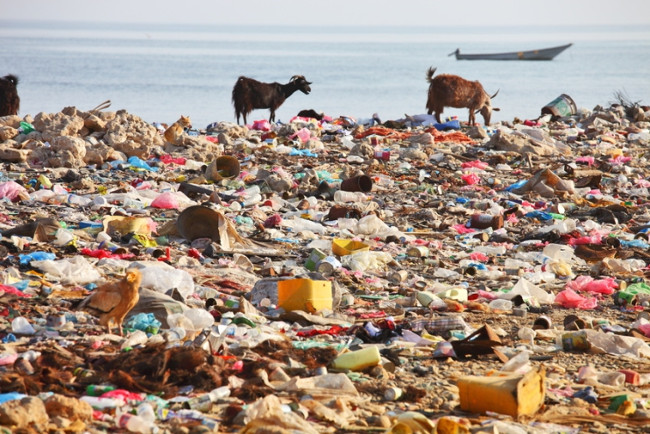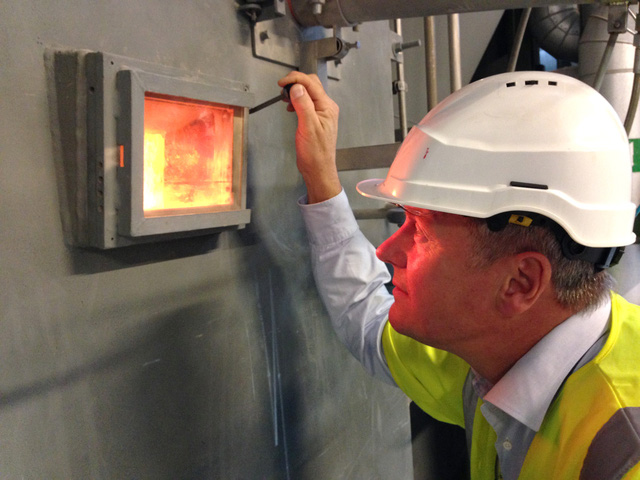While many countries are 'flooded with garbage', the country is importing waste to use
While most countries in the world, including the most developed countries in the world, are suffering from waste because there is no place to bury and pollute the environment, this country has to import garbage from other countries. use.
That "strange" country is Sweden . Here, you will never see stagnant waste, stinking pollutants thanks to a system that automatically moves garbage directly from the trash to the landfill for sorting and processing.

Every year, Sweden discharges about 435,000 tons of garbage but is still not enough to supply for thermal power plants . Therefore, they have to import a large amount of rubbish from other countries to cater to waste-burning energy plants .
Specifically, in 2010, Sweden imported 550,000 tons of waste from Norway but by 2014 this number had increased to 800,000 tons. In addition, the country has to import 100,000 tons of garbage from the UK and European countries around.
The Swedish government has paid attention to environmental issues and recycling waste very early. In 1904, Sweden built the first incinerator thermal power plant and so far the country has about 32 such plants. These houses provide heating for nearly 50% of the population in Sweden, about 810,000 households and supply electricity to 250,000 families.
As of 2012, every year Sweden has handled more than 2 million tons of garbage to provide heat and electricity for the people in the country.

The diagram shows the amount of waste that cannot be recycled in Sweden during the period of 1975-2012 (ton).
In 1975, Sweden could only reach about 37% of waste. But now, although the country's waste has tripled compared to the early 1980s, up to 99% of the waste has been recycled or used for various useful purposes . Of which, about 47% of waste is recycled, 52% is used as raw material for thermal power plants.

Model of EVAC automatic waste treatment system in Sweden

Sort garbage
After burning, the remaining amount of waste accounts for about 15% of the waste before burning. Meanwhile, thermal power plants will classify them into different parts.
Metal waste will be recycled, while other waste components will be used to make construction materials or make it. The amount of non-recyclable waste after treatment is only about 1%.
So, how will such a large amount of waste incineration affect the air environment of this country? About 99% of the emissions from thermal plants when burning waste are treated through filters and scoured into the water . After that, the recyclable filters should be discarded, and the water from the factories will be reused in the mining industry.
With such strict and scientific waste treatment process, Sweden has reduced 99% of industrial emissions since 1985.
By focusing on environmental issues in the waste treatment process, Sweden is the world's leading country in recycling waste.
In the world, the United States is the country with a total output of waste materials for electricity up to 29 million tons / year, the highest in the world today. But that amount only accounts for 12% of the country's total waste.


Waste treatment in thermal power plants in Sweden
Winter in Sweden is harsh, so the amount of heat needed to warm is very large. By 2020, Sweden will continue to import about 2.3 million tons of waste to supply to the thermal power industry and recycling.
In the face of increasing waste and environmental pollution, recycling of waste is essential and important. Many countries such as Lan Lan, China or India have sent experts to Sweden to study.
Not only Sweden, some other developed countries like Austria and Germany also have a high rate of recyclable waste, up to 60% of their total waste. The European Union - EU is also very interested in this issue and has set a goal to recycle about 50% of waste by 2020.

Sweden will continue to import rubbish supplied to waste-burning energy plants.
In some countries like China, India or some countries in South Africa are faced with flooding. The main reason is that the governments of these countries have not paid enough attention to the issue of waste and the environment when the amount of industrial and household waste is increasing. The awareness of people in environmental protection is not high.
Currently, there are some ideas that address the problem of waste in difficult countries, Sweden and recycling countries can import garbage from here. But experts say that this idea is difficult to implement because the cost of transporting garbage is too large.
There are some opinions that garbage recycling countries such as Sweden may import less garbage from struggling countries. However, many experts believe that this idea is almost impossible when the cost of transporting garbage is too large.
In order to effectively solve the problem of waste and environmental pollution, countries need a long-term strategy instead of seeking temporary solutions.
You should read it
- The truth about recycling e-waste and its effectiveness
- Why do humans not bring waste to the Sun?
- Why do we throw waste into volcanoes to handle?
- Discovered 'tattoo' lobster Pepsi logo and anxiety about the sea future
- How are people using plastic to destroy nature?
- Chinese scientists revealed plans for the Laser Station to clean up the garbage
 How long does it take waste to decompose?
How long does it take waste to decompose? Robot Boys help measure the impact of climate change
Robot Boys help measure the impact of climate change Acid in the Arctic Ocean increases rapidly with climate change
Acid in the Arctic Ocean increases rapidly with climate change The new hypothesis about Snowball Earth and how the earth freezes hundreds of millions of years ago
The new hypothesis about Snowball Earth and how the earth freezes hundreds of millions of years ago Photosynthesis is increasing globally
Photosynthesis is increasing globally China announced the digital map of Antarctic seabed 3D
China announced the digital map of Antarctic seabed 3D